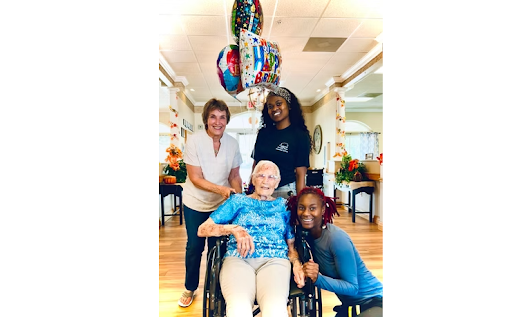Annaprashan Ceremony: Babies are fed breast milk until about six months of age, after which it is recommended to start feeding them solid food. In Western culture this is also called ‘weaning’ as the baby slowly transitions from breast milk to solid food. As it is a significant event, especially in the Hindu tradition, the event is often celebrated in the form of a traditional ritual known as Annaprashan. This ceremony marks the child’s first venture into eating solid food and is celebrated by loved ones. Here’s everything you need to know about this momentous occasion and what to keep in mind when organizing this ceremony for your little one.
What is Annaprashan Ceremony
Annaprashan, or “consecration of rice”, is a popular Hindu custom that marks a baby’s transition from consuming liquid to solid food. For those not familiar with the meaning of Annaprashan, it is performed all over India and is known as Mukhe Bhaat in West Bengal, Choroonu in Kerala and Bhath Khulai in the Garhwal Hills of Himachal Pradesh. After this ritual, the child is weaned from mother’s milk and begins to consume only solid food.
Why is the Annaprashan ceremony performed?
The Annaprashan ceremony marks the next step in the child’s growth. Annaprashan dates back to the Vedic ages and is known to be practiced in South Asia and Iran. Depending on the culture or region the parents are from, it can take place anywhere between five and nine months of age. Traditionally, children younger than four months or older than one year do not undergo Annaprashan. The Baby’s Name significance of this ritual is that the event involves several guests, a large venue and catering. Priests are present to perform the Annaprashan mantra at the auspicious time chosen for the occasion.
When to perform the Annaprashan ceremony?
Annaprashan Ceremony is done when the baby turns anywhere between six months to 1 year of age. For boys, this usually takes place in even months, such as the sixth or eighth month; while for girls it is performed in odd months such as the seventh or ninth month. Ideally, this ceremony should be organized only after six months, because until then the child must strictly feed on mother’s milk.
Where is the first rice eating ceremony held?
Annaprashan used to be conducted at home initially. However, nowadays people prefer to rent a place like a banquet hall or a party hall for the ritual. Annaprashan can also be done in a temple to get the blessings of the family deity. It lasts one day, but can be extended to two if parents wish to have a more elaborate celebration with fun and games.
Annaprashan Ceremony Vidhi?
The Annaprashan ceremony begins with the child being placed on the lap of his maternal uncle, who is to give him his first proper bite. After the child eats the first portion, other family members feed him more food and shower him with gifts. Objects such as gold jewellery, pens, books, clay and food are placed in front of the child who has to choose one of them. His choice represents his area of interest for the future.
- If he chooses gold jewelry, it means that he will be rich.
- He chooses a pen; that is, he will be wise.
- If he chooses a book, it means he will be learned.
- He chooses clay; that is, he will be endowed with wealth.
- If he chooses food, it means he will be empathetic and charitable.
Types of food offered to the baby?
Apart from the first bite of rice, there is a large amount of food that is offered to the child Mundan Muhurat during the Annaprashan ceremony. Some of them are:
- Fried rice or pulao
- Dal, sambar or rasam
- Kheer or payasam
Why is Kheer or Payasam important in Annaprashan?
Traditionally, rice is encouraged for its life-sustaining qualities and is therefore a part of all religious functions. As a result, kheer (a sweet rice dish) became an important part of all religious rituals. The shwet (white) color of kheer, which was seen as a symbol of purity and divinity, also played in her favor. Kheer or payasam is the first solid food fed to a baby and is therefore an integral part of Annaprashan Ceremony or Vidyarambham. It is usually prepared by the mother or grandmother and served to the child in a silver container.
Food safety precautions to keep in mind
Since your baby’s Name is still very young, some precautions should be taken while introducing solid food during the Annaprasana ceremony.
- Kheer is not mandatory and you can feed your baby plain rice.
- Hygienic food preparation is essential as your child could get sick from pathogens in the food.
- Talk to your pediatrician to learn about foods that are safe for your baby.
- After the Vidyarambham ceremony, you can continue to feed the baby with a combination of breast milk and solid food, as weaning takes time.
- During this ceremony, the child should be fed only small pieces of food to avoid suffocation.
Tips for a safe and memorable Annaprashan ceremony?
Annaprashan or Mundan Muhurat sanskar is a safe ceremony, but make sure you follow the following tips to make the event fun for everyone.
- Feeding your baby with clean hands is very important because at this age he can get infections quite easily.
- Let your child sleep well beforehand so that he is not cranky during the ritual.
- Avoid inviting too many guests as it could be overwhelming for your child.
- Dress your baby in soft, comfortable clothing such as cotton or linen. If it gets too cold, keep a sweater or sweater handy.
- Keep a diaper bag well stocked with all the essentials if the event is not at home.
- Try to avoid decorative work or metal threads on clothing as they can cause skin irritation.
- Have your child wear loose clothing so that it does not constrict their tummy.
- You can keep a towel or a box of tissues nearby to help clean up if any food spills.
- A separate place can be provided for children to keep them busy.
- Keep your child away from the ritual fire as the smoke could cause burning in the eyes and throat.
- Provide good ventilation so that guests do not have to inhale smoke or endure heat.
- It is polite to offer refreshments in the form of sweets or dried fruit to all guests.
- Don’t forget to document the celebration with lots of pictures or by filming the event.









